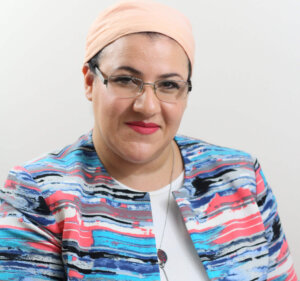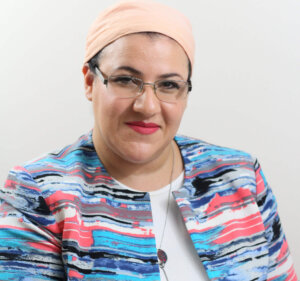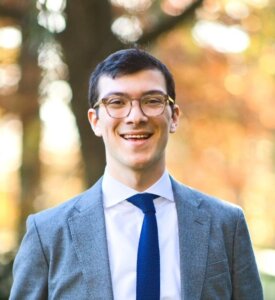Uncategorized
Disney+ series ‘A Small Light’ tells the Anne Frank story from the perspective of the woman who hid her
(JTA) — The short life of Anne Frank has inspired generations of filmmakers and television producers. The list of past productions range from “The Diary of Anne Frank” (1959), whose director George Stevens witnessed Nazi occupation as a U.S. army officer, to the Academy Award-winning documentary “Anne Frank Remembered” — featuring the only known footage of Anne — to the Emmy Award-winning dramatized miniseries “Anne Frank: The Whole Story” (2001).
On Monday night, viewers will get another TV version. But “A Small Light,” an eight-episode series premiering on National Geographic and streaming Tuesday on Disney+, tells the story from a new perspective: through the eyes of the woman who hid the Frank family.
Miep Gies was an independent 24-year-old with a busy social calendar and a dance club membership when she began working for Anne Frank’s father Otto in 1933 at Opekta, his successful jam business in Amsterdam. As Jews were rounded up and deported from the Netherlands in 1942, her Jewish boss asked if she would be willing to hide his family in an annex above the office, and she did not hesitate.
“A Small Light” stars Bel Powley as Gies, Joe Cole as her husband Jan Gies and Liev Schreiber as Otto Frank. It’s named for a quote from the real Gies, who once said that she did not like to be called a hero because “even an ordinary secretary or a housewife or a teenager can turn on a small light in a dark room.”
That metaphor had literal meaning for the Frank family and four others in the secret annex, who spent two years in a dark 450-square-foot space behind a hinged bookcase. Gies, her husband and four other employees of Otto Frank secretly kept eight Jews alive while running his business downstairs. Gies brought them food and library books, using black market ration cards and visiting several different grocers to avoid suspicion. Anne Frank said in her diary, “Miep is just like a pack mule, she fetches and carries so much.”
In the series, the “dark room” is seen less than Gies’ frenzied bicycle trips across Amsterdam, as she tries to sustain the appearance of a normal life. Her secret pushes her away from friends and family, while her marriage strains under the weight of ever-looming disaster. The creators of “A Small Light” sought to recreate a hero as a modern, flawed, at times even annoying person.
“She’s not some kind of saint,” executive producer Joan Rater told the Jewish Telegraphic Agency. “She had moods, she had a new marriage, she wanted to hang out with friends. She wanted to take a day off and she couldn’t.”
“I think everyone can relate to Miep,” said Powley, an English-Jewish actress known for starring in several British shows and in American films such as “The King of Staten Island.” “She was just an ordinary person in extraordinary circumstances.”
Although “A Small Light” is rife with tense scenes and suspense, the producers fashioned it with young audiences in mind. The show conspicuously avoids the explicit violence and horror typically expected of its subject matter, leaving out concentration camps and murders. Rater and co-creator Tony Phelan wanted children like their own to watch the series. While they were writing it, their daughter was the same age as Anne was when she was writing her diary.
Some young viewers have seen Anne’s story being swept up in literary purges across U.S. school districts, as part of the debate over what should be taught in American classrooms. Earlier this month, a Florida high school removed an illustrated adaptation of her diary after determining that references to her sexuality were “not age appropriate.” The same edition was previously yanked from a Texas school district, although it was reinstituted after public outcry. Meanwhile, a Tennessee school board banned “Maus,” Art Spiegelman’s Pulitzer Prize-winning graphic novel about his father’s experience in the Holocaust, after objections over curse words and nudity last year.
The name “Anne Frank” has long been synonymous with Holocaust education as her diary remains one of the world’s most-read books, with translations in over 70 languages. But the “relatable” rescuer presents another appealing way to teach children about one of the most wretched chapters in human history, said Brad Prager, a professor of German and film studies at the University of Missouri.
“It is the message that people like to hear,” Prager told the JTA. “If you ask a fourth-grader why we watch TV and movies — well, this is so that you can learn to do the right things, or you can learn that in certain circumstances anyone can be a hero.”
Liev Schreiber plays Otto Frank and Amira Casar plays Edith Frank in “A Small Light.” (National Geographic for Disney/Dusan Martincek)
A broader lens on the Netherlands during World War II is less palatable. The Germans and their Dutch collaborators implemented a highly effective system of persecution: Between 1942 and 1944, about 107,000 Dutch Jews were deported primarily to Auschwitz and Sobibor, then murdered. Only 5,200 of them survived.
Although Gies did everything she could to save the Jews in her care, the unwritten ending to Anne’s diary is well-known. Three days after her last entry in August 1944, Dutch police officers led by SS officer Karl Josef Silberbauer raided the annex. Gies escaped arrest by observing that she and Silberbauer shared a hometown.
“My luck was that the police officer in charge came from Vienna, the same town where I was born,” she said in a 1997 interview with Scholastic. “I noticed this from his accent. So, when he came to interrogate me, I jumped up and said, as cheerfully as I could, ‘You are from Vienna? I am from Vienna too.’ And, although he got very angry initially, it made him obviously decide not to arrest me.”
In a valiant last-ditch effort, Gies walked into the German police office the next day and attempted to buy her friends’ freedom. She was unsuccessful.
Gies found Anne’s notebooks and papers strewn on the annex floor. Without reading them, she gathered and tucked the writings into a drawer, hoping to return them to their owner. Germany had all but lost the war already, with Allied troops less than 250 miles from Amsterdam.
The Franks were packed on the last train ever to leave the Westerbork transit camp for the Auschwitz extermination camp. Otto was separated from his wife Edith and daughters Anne and Margot on the Auschwitz platform. In October, the girls were transported to Bergen-Belsen, and Edith succumbed to starvation in January 1945. Her daughters died of typhus a month later, when Anne was 15 years old.
Some studies have suggested that knowledge about the Holocaust is diminishing. In 2020, the Claims Conference found that 63% of Millenial and Gen Z Americans (ages 18-39) did not know that six million Jews were murdered in the Holocaust. More than 10% did not recall ever hearing about the Holocaust, while 11% believed that Jews caused it. Another Claims Conference survey reported that despite living in the country where Anne hid from the Nazis, a majority of Dutch people did not know the Holocaust took place there.
“In a time that antisemitism is on the rise and there are more displaced people in the world than there ever have been before, it couldn’t be a better time to re-explore this part of history, but through the lens of this ordinary young woman,” said Powley.
While “A Small Light” celebrates the power of the individual, the fate of Anne Frank also represents the failure of the whole world, said Prager. By centering Gies’ perspective, he said, the series risks making Anne a peripheral character in her own brutally aborted story.
“When you decenter Anne Frank, one thing is that you lose the Jewish perspective on the persecution,” he said.
Otto Frank, the sole survivor from the annex, appeared at Jan and Miep Gies’ doorstep after the war and ended up living with them for over seven years. In July 1945, Gies watched as he received the notice that his children were dead.
“He took it in his hands and suddenly he became eerily quiet,” Gies said in an interview for the Anne Frank House. “You cannot explain it, it was a silence that speaks. I looked up. He was white as a sheet. And he handed me the letter.”
Gies read the piece of paper, stood up and opened her desk drawer. “I took all the diaries, with all the separate sheets and everything and handed them over to Mr. Frank,” she said.
She told him, “This is your daughter Anne’s legacy.”
In 2010, Gies died at 100 years old. Every year on Aug. 4 — the day the Franks were arrested — she stayed at home, drew her curtains and did not answer the phone or doorbell.
Powley believes the show’s angle gives a fresh perspective on “your mom’s dusty copy of Anne Frank’s diary.” She approached the role of Gies with a heavy sense of responsibility.
“I feel a deeper connection to this story than I have with other projects,” she said. “This offer came to me on Holocaust Memorial Day and it immediately had that special feeling to it. My grandma, the Jewish matriarch of my family, died during COVID. I feel that she would be proud.”
—
The post Disney+ series ‘A Small Light’ tells the Anne Frank story from the perspective of the woman who hid her appeared first on Jewish Telegraphic Agency.
Uncategorized
An Israeli media mainstay is crumbling. Will liberal democracy go with it?
The Israeli government has taken another alarming step in its efforts to crack down on the press by moving toward shutting down Army Radio, which reaches some 900,000 listeners a day.
A unanimous Monday cabinet vote to close the station is being sold as a matter of logic, efficiency and principle. Why, after all, should a military institution operate what has long functioned as a national news outlet? Why should soldiers be involved in journalism? Why should the army run a radio station that frequently criticizes the government and the defense establishment itself?
On the surface, those questions sound persuasive. In most democracies, such a setup would indeed raise eyebrows. Militaries are meant to fight wars; broadcasting current affairs, as Army Radio has since 1950, does not clearly serve that purpose. The independence of the press is a foundational democratic norm; there are good reasons to question whether a military-run outlet can uphold it. Strip away the Israeli context, and the case for closing Army Radio could sound like common sense.
But Israel is not an abstract political theory exercise. It is a specific country with a specific history, and Army Radio is a specific institution that plays a role no other outlet can fully replace. Its shuttering would be devastating. And the move to shut it down cannot be understood in isolation. It fits neatly into the broader campaign led by Prime Minister Benjamin Netanyahu to weaken, intimidate or take over every independent institution capable of producing criticism, accountability, or resistance.
Army Radio is not just another broadcaster. It is one of only two national radio stations in Israel that produces comprehensive news coverage.
The other is Reshet Bet of Kan, the public broadcaster that itself has been under constant attack by this government, facing unceasing efforts to strip its funding. Eliminate Army Radio, and Israel’s radio news landscape will be reduced to a single vulnerable station — precisely the outcome critics of the government’s media policy have warned about for years.
Historically, Army Radio has been a cornerstone of Israel’s free press ecosystem. It has trained generations of journalists who later shaped the country’s media culture — some while serving as soldiers, others as civilian staff who stayed on for decades. Its newsroom culture helped normalize the idea that journalism’s role is not to flatter power, but to scrutinize it.
That tradition emerged because the IDF, uniquely among militaries, is a “people’s army,” rooted in near-universal conscription and embedded in society rather than standing apart from it. Israelis have long understood that a station staffed in part by conscripts from across the country — religious and secular, right and left, center and periphery — is not a mouthpiece in the classic sense. On the contrary, Army Radio often earned its reputation by irritating ministers, generals, and prime ministers alike.
That approach earned it broad public trust — the same kind of trust that once established the IDF’s legitimacy. Incredibly, the government is also trying to undermine that trust through constant feuding with the military brass, and a concerted effort to deflect all blame for the Oct. 7 meltdown on the military. (Both government and military certainly failed on that day.)
The effort to close Army Radio mirrors the government’s campaigns against the judiciary and the police, among many other targets. Each time, the strategy is the same: identify a real or arguable flaw in an institution that exercises independence from total government control, exaggerate it, and then use it to justify dismantling or weakening that institution.
Netanyahu’s goal — similar to the successful project led by President Vladimir Putin in Russia, and to ongoing efforts in Hungary and Turkey — is to transform Israel into a country with something close to an elected dictatorship. His arguments are never openly authoritarian, but rather procedural, managerial, technocratic — and therefore harder to resist.
Communications Minister Shlomo Karhi’s broader project to restructure, weaken, and politicize Israel’s media landscape, framed as deregulation and modernization, consistently moves in one direction: reducing independent oversight, centralizing power and increasing political leverage over broadcasters. Where takeover is possible, pressure is applied. Where it is not, closure becomes the solution. Army Radio, inconveniently independent and symbolically beloved, cannot be easily captured, pressured through advertisers, or quietly restructured. So it must be eliminated.
Public opposition to the move has been broad and intense, cutting across ideological lines. For many Israelis, Army Radio is not merely a broadcaster; it is part of the country’s civic fabric. Closing it feels less like reform and more like provocation — another deliberate escalation in an ongoing culture war designed to pit Israelis against one another.
That, too, is a feature, not a bug.
This government thrives on confrontation with institutions that command public trust. By attacking them, it forces citizens to choose sides, reframes resistance as elitism or sabotage, and mobilizes its base through grievance and the seductive argument that a government elected by a majority is always legitimate in its actions.
Army Radio, anomalous as it is, stands in the way of Netanyahu’s Putinization dreams. Its existence contradicts the idea that media must either align with power or be marginalized. It reminds Israelis that criticism from within the system is not treason but patriotism. And that is precisely what makes it intolerable to an increasingly illiberal government.
None of this requires romanticizing Army Radio or denying that its structure is unusual. Yes, a military-run news station is an oddity. Yes, in another country, reform might be justified. But democracies are not built by eliminating every anomaly. They are sustained by preserving institutions that work, even when they defy neat theoretical categories.
Israel does not need fewer trusted voices right now. It does not need another symbolic demolition of a shared civic institution. And it certainly does not need to hand its already embattled media landscape another blow on behalf of a government that does Israel devastating harm.
The post An Israeli media mainstay is crumbling. Will liberal democracy go with it? appeared first on The Forward.
Uncategorized
How the next generation of rabbis is preparing for the age of A.I.

Denise Blumenfeld’s AI learning tool doesn’t have all the answers — or at least it’s not so eager to give them away. Instead, Blumenfeld, a second-year student at the Orthodox women’s seminary Yeshivat Maharat, has customized ChatGPT to answer her with questions with a question.

I watched recently as Blumenfeld fed a paragraph of Talmud into the module, aptly named Socrates Havruta (its surname is Hebrew for study partner). Its response tested her reading comprehension: Based on the first line of the text, what is the basic obligation around candlelighting? Blumenfeld typed in an answer, which Socrates affirmed before asking another.
She knew ChatGPT could simply summarize the text, but would that really help her learn it? On the other hand, responding to questions could help someone figure things out on their own. And to keep herself honest, she’d set a rule: “I always try to read the authentic source first,” she told me.
Blumenfeld is part of the first generation of rabbinical students who are training with artificial intelligence tools like OpenAI’s ChatGPT and Google Gemini at their disposal — and hoping to avoid those tools becoming a crutch. But the beit midrash, or study hall, is just one of many contact points they have with an invention that may be changing not only what it means to be a student or a rabbi, but also what it means to be Jewish.
To get a sense of how AI is helping shape the next generation of the rabbinate, I interviewed students from five U.S.-based rabbinical schools about how use and think about AI in relation to their work. Their attitudes ranged from guarded enthusiasm to flat rejection. But their comments — and the boundaries they had each set around their personal use — revealed the deep influence AI is already having on their professional and religious outlook.
This was true even for students who did not use generative AI at all. Adrian Marcos, a student at the Ziegler School of Rabbinical Studies, listed moral reasons he avoided it, among them its exploitation of stolen data, its environmental impact, and the digital literacy crisis it was accelerating. Yet Marcos admitted that the burden of explanation fell on AI’s detractors, not its enthusiasts.
“A lot of people are very into AI, and as a rabbi, whether or not you end up in a pulpit, you have to converse with those people,” said Marcos, a second-year student at the Conservative seminary. “And as the technology evolves, the conversations around it are also going to evolve.”
Hacking the sermon

ChatGPT can seemingly draw on the entire digitized Jewish canon, translate it from Hebrew if necessary, and draft new content about it. For students pursuing the rabbinate because of their passion for seeking and sharing knowledge themselves, the question was whether a tool that lightened the load was really helping.
Aiden Englander, a fourth-year at Yeshiva University’s Rabbi Isaac Elhanan Theological Seminary, engages ChatGPT for on-call intellectual companionship. Upon finding an interesting commentary on the week’s Torah portion, he’ll ask ChatGPT for secular variations on the idea. It might spit out Nietzsche, he said, or a recent news story.
Knowing ChatGPT can make such a connection unlocks a different level of rhetorical ambition — serving as a kind of academic force-multiplier — but it forecloses the possibility of, well, sorting out his concept without it. It also raises the question of what makes a sermon “better,” and whether literature you’ve only learned about via ChatGPT summary is any less suitable for a sermon than a volume you’re still working through on the page.
Englander’s calculus was straightforward. “When you’re able to quote a book that someone is familiar with, they’ll remember it more,” he said.

Though an avid user, he harbors doubts about AI’s reliability. “It will just completely make up a Gemara,” he said, and in his view its knowledge is especially shallow in matters of Jewish law. Yet what ChatGPT can do is what makes Englander, who is 24, most cautious. In a creative pinch, he’ll ask it to bullet-point some possible themes to explore from that week’s Torah portion to write a sermon about. But that’s a muscle he’s conscious about developing, so he tries to desist.
Yet a theological question about AI use persists underneath the utilitarian concerns. Is a ChatGPT-generated d’var torah a bad idea because it’s likely to spew cliches or degrade one’s writing ability — or because the very notion of a computer recommendation defeats the purpose of the exercise, which is to bring human experience to bear upon the Torah and vice versa? Major Jewish denominations have been as quiet on the religious questions around AI as rabbinical schools have been on the practical ones, leaving students to work out both problems on their own.
“An LLM doesn’t have autobiography — it’s not having a faith experience,” said Dani Pattiz, a second-year student at Hebrew Union College. “It can come up with these brilliant syntheses of other people’s ideas. But at the end of the day, it can’t genuinely glorify God, or speak to people’s souls in an authentic way.”
A changing pulpit
As they navigated their own use of AI, rabbinical students were pondering how it would reshape the lives of their future congregants, and in turn, their own work.
On a recent trip to Washington, Micah Glickman, a rabbinical student at Hebrew Union College, the flagship Reform seminary, visited a synagogue where a number of congregants had been laid off in DOGE’s federal job cuts. AI’s impact on employment, he realized, could be exponentially greater. If that were the case, it was not merely that more people would be facing financial and emotional vulnerability. It was also that a universal source of human fulfillment might have an expiration date.

“It seems like the promise of this technology is to basically do anything that a person can do, and do it better than that person can,” Glickman said in an interview. “And I wonder how that will affect a congregation of people who maybe derive a sense of meaning and purpose from their accomplishments in life.”
It would fall on rabbis and other faith leaders, Glickman said, to shepherd their communities through this change. “There’s some impending spiritual crisis that we’re on the verge of,” he said. He was helping organize a symposium at HUC to consider these and other AI-related issues — seeking a spiritual solution, he said, to a spiritual problem.
Meanwhile, he was already encountering ChatGPT-written bar mitzvah speeches from the students he tutors. That put him in the position of his HUC professors: Should he discourage kids from using it, or — conceding to inevitability — try to steer them towards using AI responsibly?
It was a theme across interviews: The future rabbis I spoke to were more worried about how the generation after them would learn than they were about their own trajectories. Today’s students, after all, largely passed their studies prior to rabbinical school without ChatGPT; they were wary of atrophy only because they knew they had muscles to begin with.
Even Blumenfeld, the Maharat student, was not sure she would recommend her Socrates bot to younger students. “Because I had experience learning and teaching before AI, I know what the result I’m looking for is, and know how to ask the right thing,” she said, whereas kids at that age hadn’t yet developed those skills. “As teachers,” she added, “we need to learn how to teach.”
They also need to teach how to learn, and why to learn. YU’s Englander recalled a thought experiment shared decades ago by the university’s former president Rabbi Norman Lamm: If you could implant a microchip into your brain that gave you complete knowledge of the Torah, would you ever have to learn? Lamm’s opinion was that learning in fact had primacy over knowledge — that the toil of studying the Torah was not just a means to an end, but a form of worship in and of itself.
“This might be a little bit more of a mystical notion, but from the standpoint of accessing Hashem, it’s only accomplished through learning the text and struggling with it, not being told what the text says by a third party,“ Englander said. The reason he could generally detect when ChatGPT was hallucinating the Talmud, he added, was because he had put in the hours studying it himself.
The post How the next generation of rabbis is preparing for the age of A.I. appeared first on The Forward.
Uncategorized
Belgium Joins South Africa’s Genocide Case Against Israel at UN Court

A general view inside the International Court of Justice (ICJ), at the start of a hearing where South Africa requests new emergency measures over Israel’s operations in Rafah, in The Hague, Netherlands, May 17, 2024. Photo: REUTERS/Yves Herman
Belgium officially became the latest country to join South Africa’s genocide case against Israel at the United Nations’ top court on Tuesday, as international pressure mounts on the Jewish state despite a US-backed ceasefire that has so far paused the two-year conflict in the Gaza Strip.
The International Court of Justice (ICJ) announced that Brussels has requested to join the South African case by filing a declaration of intervention, allowing it to participate without being the original plaintiff.
Belgium joins several other countries in the case, including Brazil, Colombia, Ireland, Mexico, Spain, Turkey, Cuba, Libya, Bolivia, the Maldives, Chile, and “Palestine.”
Earlier this year, South Africa vowed to continue its genocide case against Israel despite the ceasefire in Gaza, the most significant effort yet to halt the two-year Middle Eastern conflict.
Speaking before parliament in Cape Town, South African President Cyril Ramaphosa affirmed that the US-backed peace deal “will have no bearing” on the ongoing legal proceedings against the Jewish state.
Ramaphosa promised to continue seeking “justice for the people of Gaza,” while reiterating false accusations that Israel committed genocide under international law during its defensive military campaign against the Palestinian terrorist group Hamas.
Israel has strongly rejected all allegations of genocide, calling South Africa’s case “baseless” and “politically motivated.”
Ramaphosa’s continuing push comes amid ongoing international pressure, with the US, South African political leaders, and the local Jewish community all expressing opposition to his government’s actions, accusing it of pursuing an anti-Israel campaign instead of addressing the country’s own pressing issues.
Since December 2023, South Africa has been pursuing its case at the ICJ accusing Israel of committing “state-led genocide” in its defensive war against Hamas in Gaza.
Israeli leaders have condemned the case as an “obscene exploitation” of the Genocide Convention, noting that the Jewish state is targeting terrorists who use civilians as human shields in its military campaign.
Meanwhile, South Africa’s Jewish community have lambasted the case as “grandstanding” rather than actual concern for those killed in the Middle Eastern conflict.
Last year, the ICJ ruled there was “plausibility” to South Africa’s claims that Palestinians had a right to be protected from genocide.
However, the top UN court did not make a determination on the merits of South Africa’s allegations, which may take years to go through the judicial process, nor did it call for Israel to halt its military campaign.
Instead, the ICJ issued a more general directive that Israel must make sure it prevents acts of genocide. The ruling also called for the release of the hostages kidnapped by Hamas during the terrorist group’s invasion of and massacre across southern Israel on Oct. 7, 2023.

